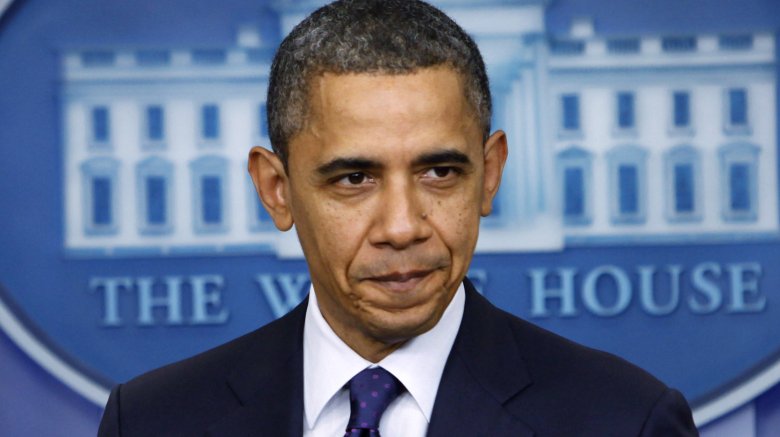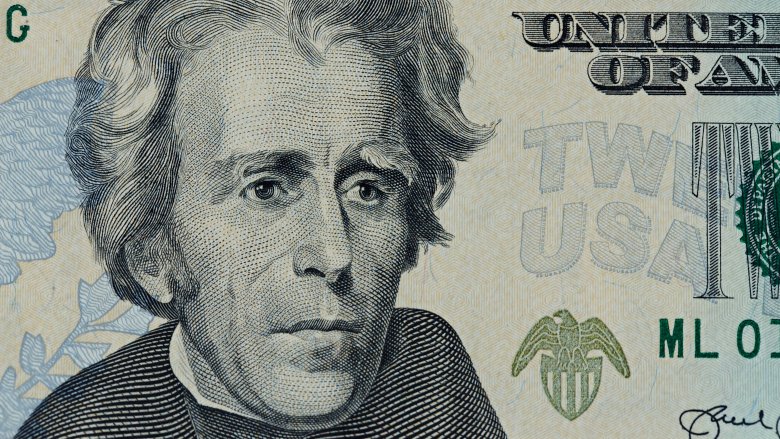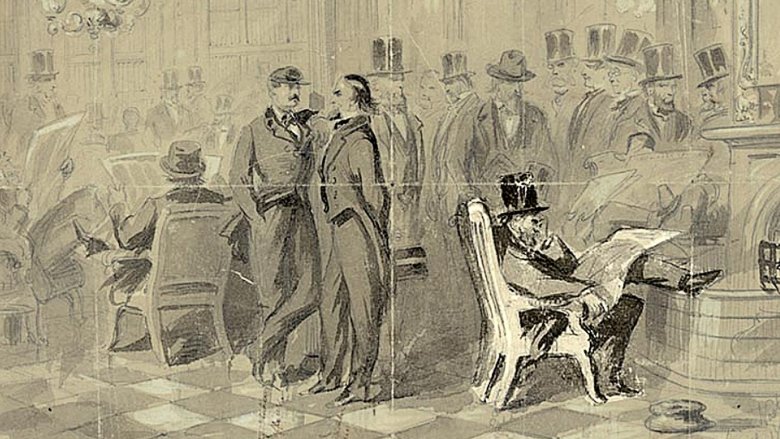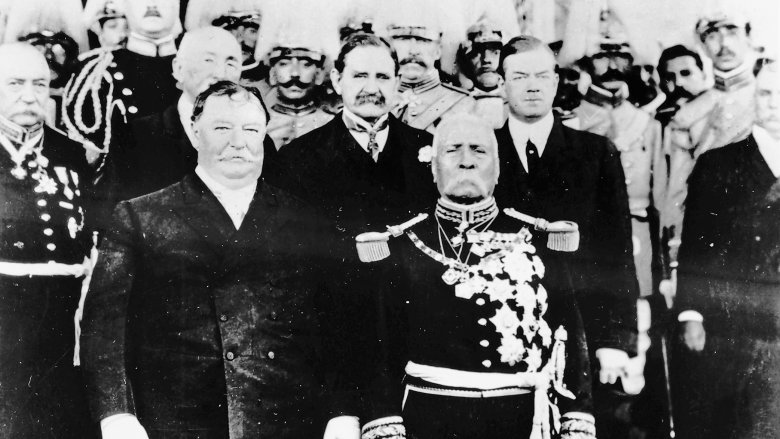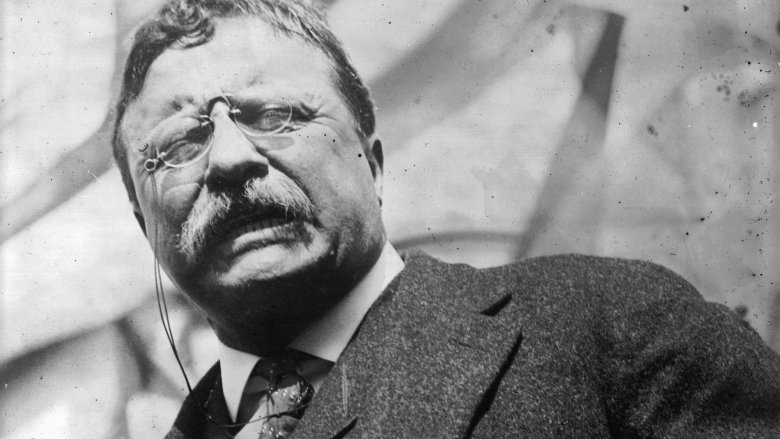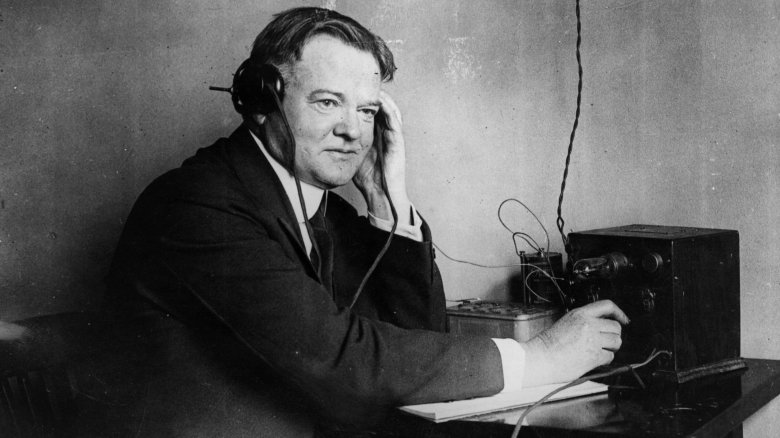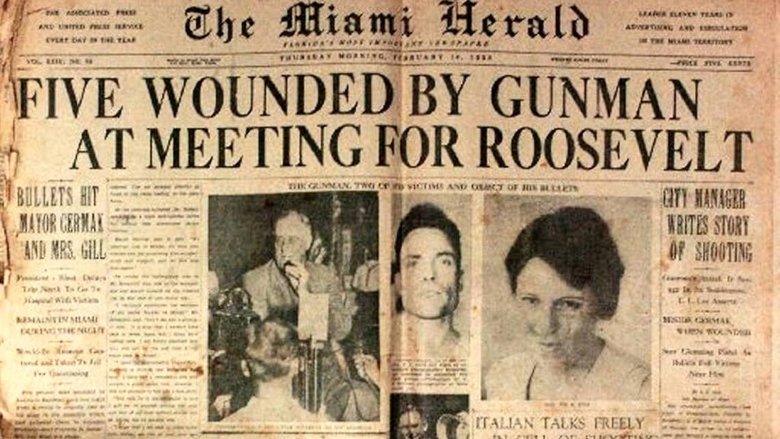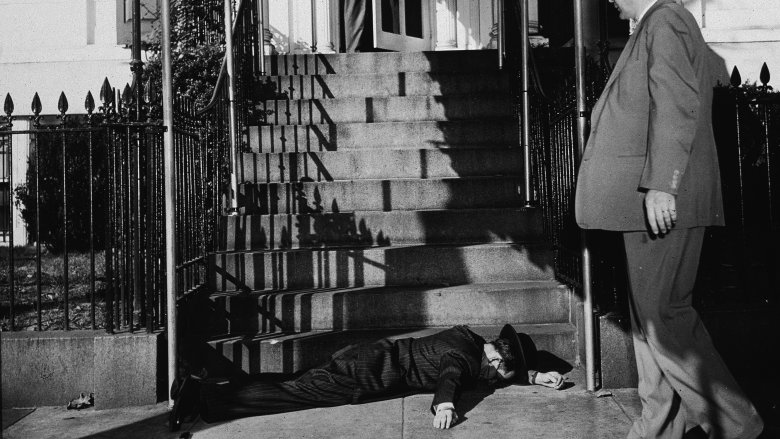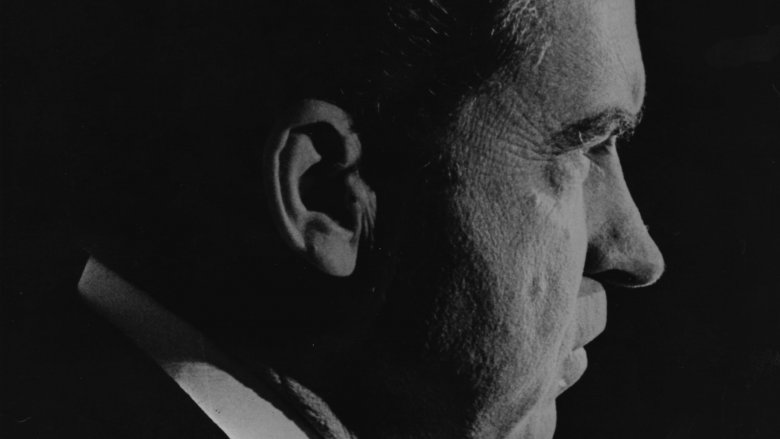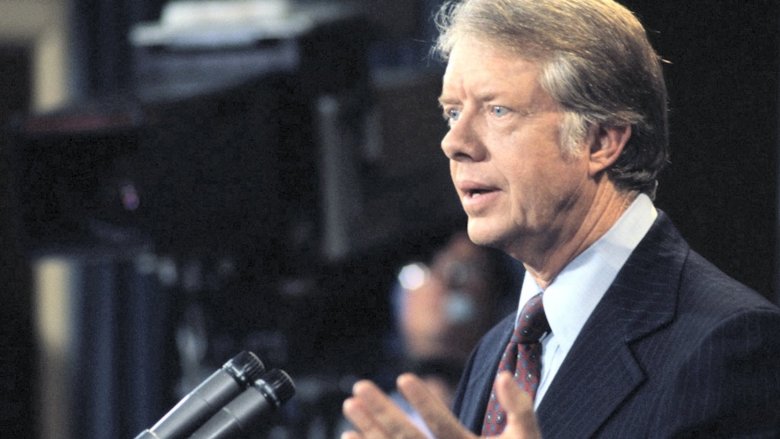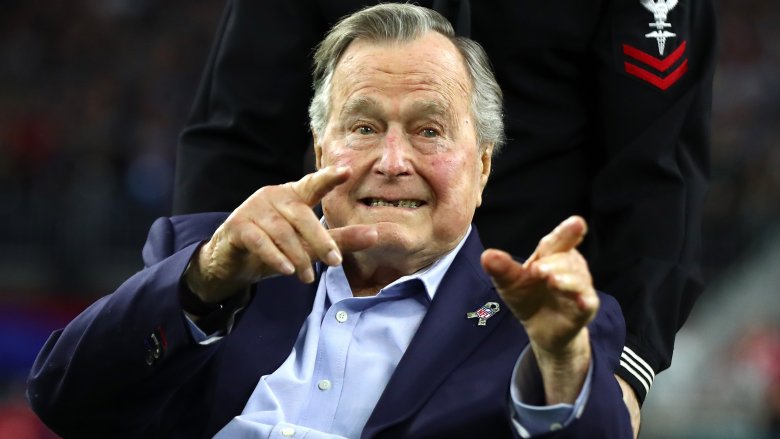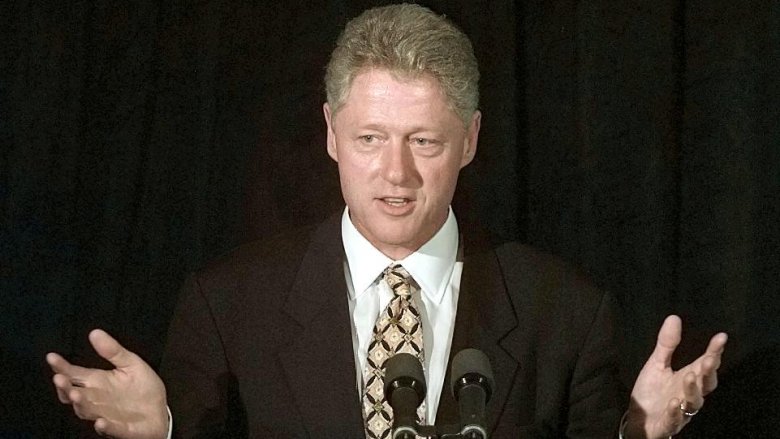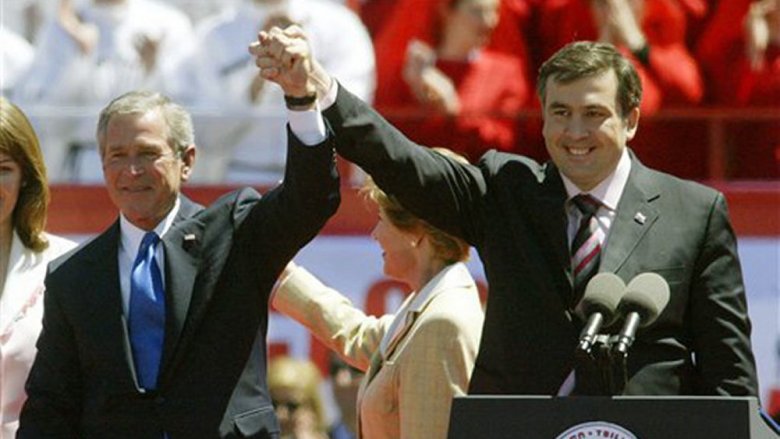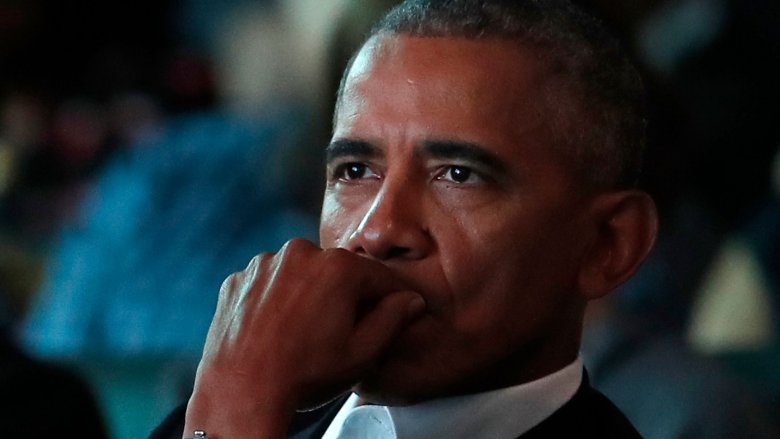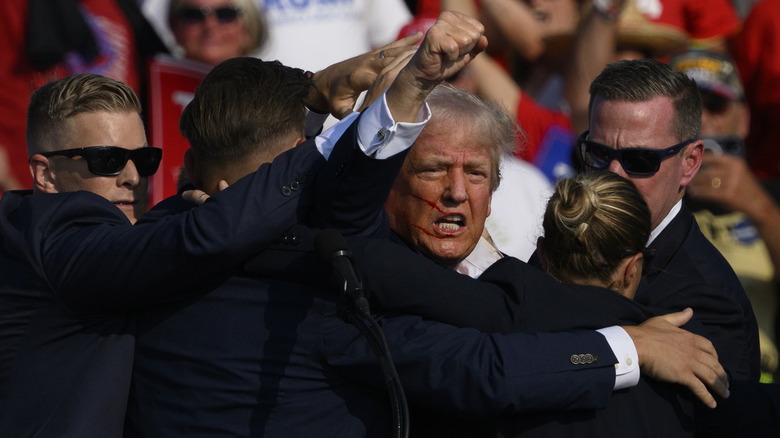Every U.S. President Who Survived An Assassination Attempt
There might not be many jobs on Earth more stressful than being president of the United States. Between the massive responsibility, the constant media attention, and the never-ending workload, presidents have a tough life — and it is often commented on how rapidly they visibly age during their tenure. However, the longevity of a president is constantly threatened by an additional source of stress: assassination attempts.
Facing daily decisions that rarely please everyone, U.S. presidents often raise the ire of the nation. Unfortunately, that exposure can sometimes bring out the worst in a few people, who, divorced from reality, take their anger to a deadly level. From the threat of shootings to bombs to plane attacks to poisoned letters, the commander in chief's protective detail — the Secret Service — is constantly on its toes. But tragically, some of our greatest U.S. presidents have lost their lives in attacks, and many others have come within a hair's breadth.
Andrew Jackson, 1835
Back in the early 19th century, a U.S. president had never been seriously threatened by one of his own constituents. That all changed on one fateful day in 1835, when an unhoused house painter named Richard Lawrence pulled the trigger on President Andrew Jackson at a congressional funeral. The gun misfired, saving Jackson's life. However, Jackson was understandably enraged about the whole thing, so he proceeded to beat Lawrence with his walking cane. Lawrence then misfired again — talk about a coincidence — and before he could fire a third time, he was swiftly taken down by the president's aides.
Even when the dust settled, this incident lingered in the back of Jackson's mind, and the president became increasingly concerned that Lawrence had been sent by a political rival. This seems like a reasonable suspicion, considering Jackson was stirring up a lot of controversy at the time, but Lawrence probably had no connection to Jackson's enemies.
Abraham Lincoln, 1861
Abraham Lincoln's murder at Ford's Theatre at the close of the Civil War was one of the most tragic moments in United States history. However, that wasn't the first time someone tried to assassinate the man who would one day be known as "the Great Emancipator." In 1860, the election of a known abolitionist to the White House was a source of massive controversy, causing tensions between the Northern and Southern states to reach a fever pitch. President-elect Lincoln was due to assume the presidency in early 1861, and after a touching farewell to his home state of Illinois, he hopped on a train to Washington, with a scheduled stopover in Baltimore. What Lincoln didn't realize was that in Baltimore a man named Cypriano Ferrandini (and at least one associate) was planning to murder him.
Luckily, the terrorist plot was sussed out by police detective Allan Pinkerton, who warned the Lincoln family. Lincoln wanted to stop in Baltimore anyway, but his wife convinced him to skip it, leading to the Lincoln family hiding out in Washington's Willard Hotel, as pictured above, until Lincoln was finally inaugurated on March 4.
William Taft, 1909
William Howard Taft wasn't the most famous president in history, but trivia buffs may recognize him as the unfortunate guy who got stuck in the bathtub. Memorable as that image may be, it probably never happened. In real life, Taft had more important things to deal with. Pretty significantly, he was the first U.S. president to meet with a Mexican president, then a former general named Porfirio Díaz. Considering the not-so-pleasant history between both nations, this was a pretty big deal.
The celebrated USA/Mexico crossover in El Paso, Texas, was accompanied by lots of glitz and bombast, including a parade with 2,000 U.S. Army soldiers and more than 2,000 Mexican troops. You'd figure no one would be stupid enough to make an assassination attempt with that massive military presence around, but sure enough, some guy wielding a pencil pistol broke through the crowd and tried to murder both presidents at once. The would-be assassin was taken down before he could do anything, but he managed to get within a few feet of his targets.
Teddy Roosevelt, 1912
Even though Teddy Roosevelt successfully completed two terms by 1909, the "speak softly and carry a big stick" politician ran for a third term in 1912, and gave a big campaign speech in Milwaukee. Not everyone was happy about this: As Roosevelt stood up before the crowd, a barkeep named John Schrank shot a bullet at Roosevelt's heart. Insanely enough, the speeding bullet smacked right into the bundled papers of Teddy's speech, which he'd stuffed in his breast pocket earlier, as well as his glasses case. The bullet still lodged in Teddy's chest, but the speech papers/glasses case combo had significantly slowed down the bullet's momentum.
So what did Teddy do? Apparently intent on cementing his reputation as the most hardcore U.S. president of all time, Roosevelt just continued giving his speech, as if totally unfazed by getting a bullet in the chest. He even ripped the bloodied papers out of his pocket, held them before the crowd, and announced, "You see, it takes more than one bullet to kill a Bull Moose."
After the speech was done, Roosevelt rushed to the hospital for treatment and recovered, while Schrank spent the rest of his life in a mental hospital.
Herbert Hoover, 1928
From the start, Herbert Hoover was at risk of being assassinated. Right after he was elected, six security agents drove up to his California home and were so worried by the house's many windows that they immediately installed floodlights on the grounds.
Well, before the month was out, someone did try to murder the new president-elect, but it didn't happen in California. Later in November, Hoover set off on a goodwill tour of Latin America, hoping to spread a message of peace to our southern neighbors. But not everyone felt so peaceful. A man named Severino Di Giovanni and his allies felt the president-elect's visit was a perfect opportunity to get revenge on the United States. Once Di Giovanni deducted that Hoover was going to ride a train from Chile to Argentina, he arranged to have explosives planted on the railroad tracks.
The plot was discovered, and the bombers were all arrested before anything could be put into motion. As for Hoover, he appeared remarkably undisturbed by the whole hullabaloo.
Franklin Delano Roosevelt, 1933
President Franklin Roosevelt faced many unprecedented challenges. As if both the Great Depression and World War II weren't enough, he also suffered from polio that left him paralyzed from the waist down. Throughout all this, FDR's policies, courage, and stability have led to him often being celebrated as one of the most important U.S. presidents in history. But it all could have ended tragically on one day in 1933.
Down in Miami, the new president-elect was giving a speech to a massive crowd. Amid the record flock of 25,000 observers slunk an unemployed man named Giuseppe Zangara, who'd just purchased an $8 pistol. According to later reports, Zangara said (via History) he had no problem with FDR personally but claimed he hated "all officials and anyone who is rich." As soon as Zangara had a clear shot, he screamed out, "Too many people are starving!" and fired six rounds at the president-elect. He missed FDR, but his bullets went through five other people, including visiting Chicago mayor Anton Cermak, who died from his wounds. The crowd swiftly took down Zangara and might have killed him had not a calm and composed FDR told them to let the authorities handle the assassin. FDR went on to devote his presidency to ending the Great Depression.
Harry Truman, 1947 and 1950
Attempts on the president's life became increasingly common in the latter half of the 20th century, and Harry Truman had to deal with two tries. The first came knocking on his door in 1947, when a Zionist group called the Stern Gang sent multiple letter bombs to the president, rigged to explode when the envelopes were opened. Before any fatalities could occur, the White House mail room snagged the letters and had the bombs defused by the Secret Service.
Only a few years later, Truman faced another murder attempt. At the time, the White House was being renovated, so Truman and his family were living around the corner in the Blair House. The two would-be assassins, Griselio Torresola and Oscar Collazo, marched right up to the front door and started firing their guns. Predictably, neither of them got very far. Torresola was mortally wounded in the conflict, and Collazo was sentenced to death, though in 1952, Truman arranged to have his near-killer's sentence changed to life imprisonment.
Richard Nixon, 1974
The shocking death of John F. Kennedy in 1963 was one of the most traumatic events ever to hit the collective American psyche. While JFK was the last U.S. president to be murdered while in office, he certainly wasn't the last one to face an assassination attempt. It was only a decade later that a former tire salesman named Samuel Byck tried to kill President Richard Nixon.
Byck had previously protested outside the White House wearing a Santa Claus costume, and his grand plan — which he called Operation Pandora's Box — was to hijack a commercial airliner and then force the pilots to crash it headfirst into the White House, hopefully killing Nixon. Byck's terrorist attack didn't make it too far. Before the plane could even take off, he was shot up by police and then died by suicide. These events loosely inspired the 2004 film "The Assassination of Richard Nixon," starring Sean Penn. As for Nixon himself, he resigned later that year due to the infamous Watergate scandal.
Gerald Ford, 1975
Two assassination attempts would be scary enough, but Gerald Ford faced both of his in the same month. The first occurred in Sacramento on September 5. Lynette "Squeaky" Fromme, a Charles Manson follower, was desperate to prevent what she perceived as an environmental threat to the California redwoods, and believed that she had to shoot Ford to make a statement. Fromme claimed to have gotten cold feet as soon as she saw Ford in person, but still raised the gun. The Secret Service rapidly restrained her before anything could happen, and Fromme was sentenced to life in prison.
A few weeks later, Ford was in San Francisco when a former FBI informant named Sarah Jane Moore attempted to shoot him. Moore's attempt was stopped by a nearby Vietnam veteran, Oliver Sipple, who managed to throw off her aim. Secret Service hurried Ford into a vehicle before Moore could hit him. She was sentenced to the same West Virginia prison as Fromme, though both were later transferred to more secure facilities.
Jimmy Carter, 1979
In 1979, President Jimmy Carter was giving a Cinco De Mayo speech in Los Angeles, and he had no idea that hidden in the crowd was an unemployed drifter with the eerily familiar name of Raymond Lee Harvey. Harvey was wielding a gun, but before the perpetrator could shoot, his suspicious demeanor caught the attention of Secret Service members, who arrested him on the spot.
Though Harvey was the one who got caught, it turned out he was just a small fish in the assassination ocean. According to Time, Harvey told the authorities that he was supposed to be one part of a four-man operation to kill Carter. Supposedly, Harvey's role was simply to shoot loudly enough to cause a distraction, while his partner, Osvaldo — yes, the name similarities continue — finished the job with a sniper rifle. Charges against Raymond Lee Harvey were later dismissed due to lack of evidence.
Ronald Reagan, 1981
In 1976, a man named John Hinckley Jr. watched the film "Taxi Driver" and became dangerously fixated on actress Jodie Foster. Hinckley wrote letters to Foster, traveled to Connecticut in an attempt to see her, and even tried to call her on the phone. His obsession took an even darker turn when he decided that he wanted to kill the president of the United States "for her." In 1980, Hinckley attempted to trail President Jimmy Carter, but was arrested for carrying his guns near a Carter campaign stop.
Undeterred, Hinckley bought more guns. His obsession climaxed in 1981 when he tracked the new president, Ronald Reagan, to the Hilton Hotel in Washington. Hinckley unloaded a barrage of exploding bullets at Reagan. Though they didn't explode properly, one bullet pierced Reagan's chest, and others wounded a Secret Service agent, a police officer, and press secretary James Brady. Reagan survived the shooting. The courts determined that Hinckley was insane, and sentenced him to a mental hospital where he remained until his release in 2016.
George H.W. Bush, 1993
The original President George Bush made it through his four years without facing an assassination attempt, but that all changed after he retired. In April 1993, just three months after finishing his term, Bush took a trip to Kuwait. Soon afterward, 17 suspects were arrested on charges of attempting to assassinate the former president with a car bomb. Further investigation by the FBI determined that the suspects had not been acting alone, but were part of a covert operation directed by the Iraqi Intelligence Service.
Seeing as Bush wasn't the president anymore, the official U.S. response came from the new president, Bill Clinton, who wasn't too happy about the incident. To make a point, Clinton decided to launch 23 cruise missiles at the Iraqi Intelligence Service headquarters in Baghdad. The missiles were specifically fired between 1 a.m. and 2 a.m. to prevent the death of innocent civilians, though Iraq officials later stated that three houses had been destroyed, three people killed, and four injured.
Bill Clinton, 1994 and 1996
During his time in office, Bill Clinton made it through a few assassination attempts. The first incident occurred in September 1994, when a truck driver named Frank Eugene Corder — who had alcohol dependency issues — attempted to pilot a small plane right into Clinton's White House bedroom, but instead crashed into one of Andrew Jackson's old magnolia trees. Ironically enough, the Clinton family had slept over in the Blair House that night. So even if Corder had hit his target, his murder attempt would've failed, though it certainly would've infuriated all the taxpayers who would have footed the repair bill.
Clinton also survived an eerier encounter in 1996. That year, Clinton was visiting Manila, and Osama bin Laden ordered his operatives to plant a bomb beneath a bridge that the presidential motorcade was scheduled to drive over. Just in time, Secret Service agents picked up a message regarding the bomb and rerouted Clinton's path to avoid it. Though bin Laden's involvement in the plot was soon uncovered, U.S. officials opted to keep quiet on the matter until many years later.
George W. Bush, 2005
In May 2005, President George W. Bush stood beside Georgian President Mikheil Saakashvili on a stage in Freedom Square, in the city of Tbilisi, Georgia. Bush was giving a speech when suddenly a grenade came flying toward him from the audience ... which, surprisingly enough, didn't explode. As explained by the FBI, the grenade was live, but the attacker had wrapped it up so tightly in a red handkerchief that the firing pin wasn't able to deploy properly.
The attacker escaped but was tracked down a few months later, and found to be a local Tbilisi man named Vladimir Arutyunian. Arutyunian, as it turned out, was the kind of guy who kept a bunker in the woods filled with a deadly array of chemicals, weapons, and explosives. After an incredibly strange trial, including one day where Arutyunian showed up with his mouth literally sewn shut, the would-be assassin was convicted and given life imprisonment for the presidential attack — and for his murder of a police officer who had tried to take him in.
Barack Obama, 2009, 2011 and 2013
Being the first Black president of the United States, Barack Obama received more death threats than most public figures, even compared to other U.S. presidents. However, there were three specific assassination attempts that made headlines. The first one occurred in 2009, when President Obama attended the Alliance of Civilizations Summit in Istanbul. A Syrian man was arrested for carrying fake press credentials, and the man confessed that he'd been planning to stab Obama with a knife.
Things got a lot weirder in 2011, when a young man named Oscar Ortega-Hernandez attacked the White House with an assault rifle. Ortega-Hernandez described himself (via the Telegraph) as "the modern-day Jesus Christ" and believed it was his holy mission to kill Obama, whom he deemed "the Anti-Christ." Needless to say, Ortega-Hernandez was arrested and charged with attempting to assassinate the president.
The strangest story happened in 2013, when typewritten letters were sent to Obama containing a suspicious substance. This substance was soon found to be ricin, a deadly poison. An Elvis impersonator named Paul Kevin Curtis was arrested and charged, but was found innocent. Charges instead fell upon Curtis' online rival, James Dutschke, whom Curtis said had framed him. The bizarre story ended with Dutschke being sentenced to 25 years in prison.
Donald Trump, 2017, 2018, 2020, and 2024
During his 2017 to 2021 presidential term, and his third presidential campaign in 2024, Donald Trump faced four assassination attempts. When the president paid a visit to the Andeavor Mandan Refinery in North Dakota in September 2017, Gregory Lee Leingang gained access to a secure area and tried to use a forklift to turn over the presidential vehicle while Trump was inside it. The forklift got stuck before he could get to the president's motorcade, and Leingang was apprehended after fleeing.
In the fall of 2018, William Clyde Allen III attempted to kill President Trump by mailing him letters containing ground caster seeds, which contain the biotoxin ricin. Another would-be assassin, Canadian Pascale Ferrier, mailed a ricin-loaded letter to President Trump in 2020. On both occasions, the envelopes were intercepted by authorities before Trump could handle them.
In July 2024, Trump was onstage during a rally in Butler, Pennsylvania, when gunshots suddenly rang out. Trump grabbed at his bleeding ear — apparently struck by a projectile — and slowly fell to the ground as members of his Secret Service protective detail rushed the stage. Law enforcement opened fire toward the source of the attack while Secret Service agents quickly moved Trump to an armored vehicle. Trump was initially and immediately declared to be okay after the shooting. According to the Associated Press, Secret Service agents killed the assailant, found on the roof of a building more than 140 yards away from the rally site. In addition to the alleged gunman, one rally attendee was also killed.
